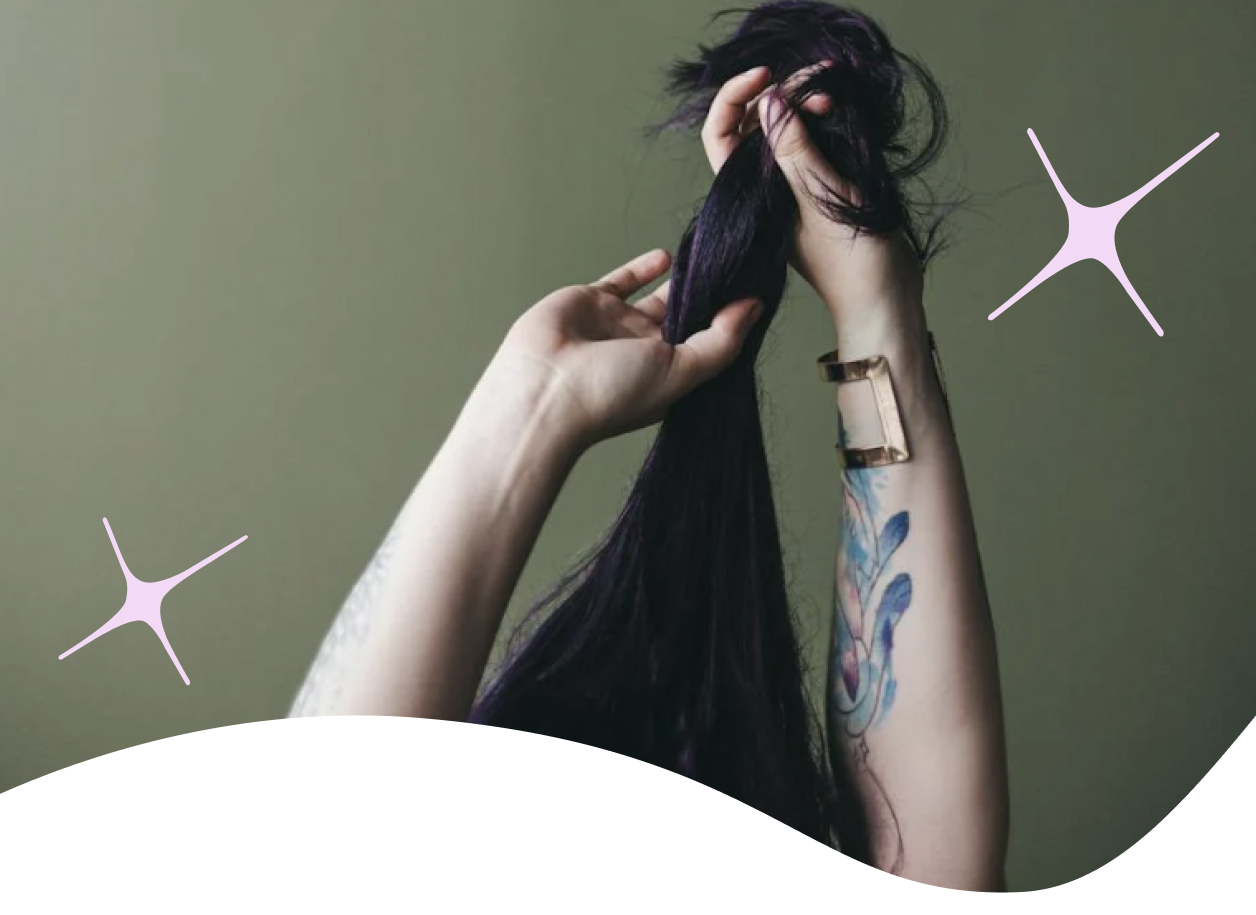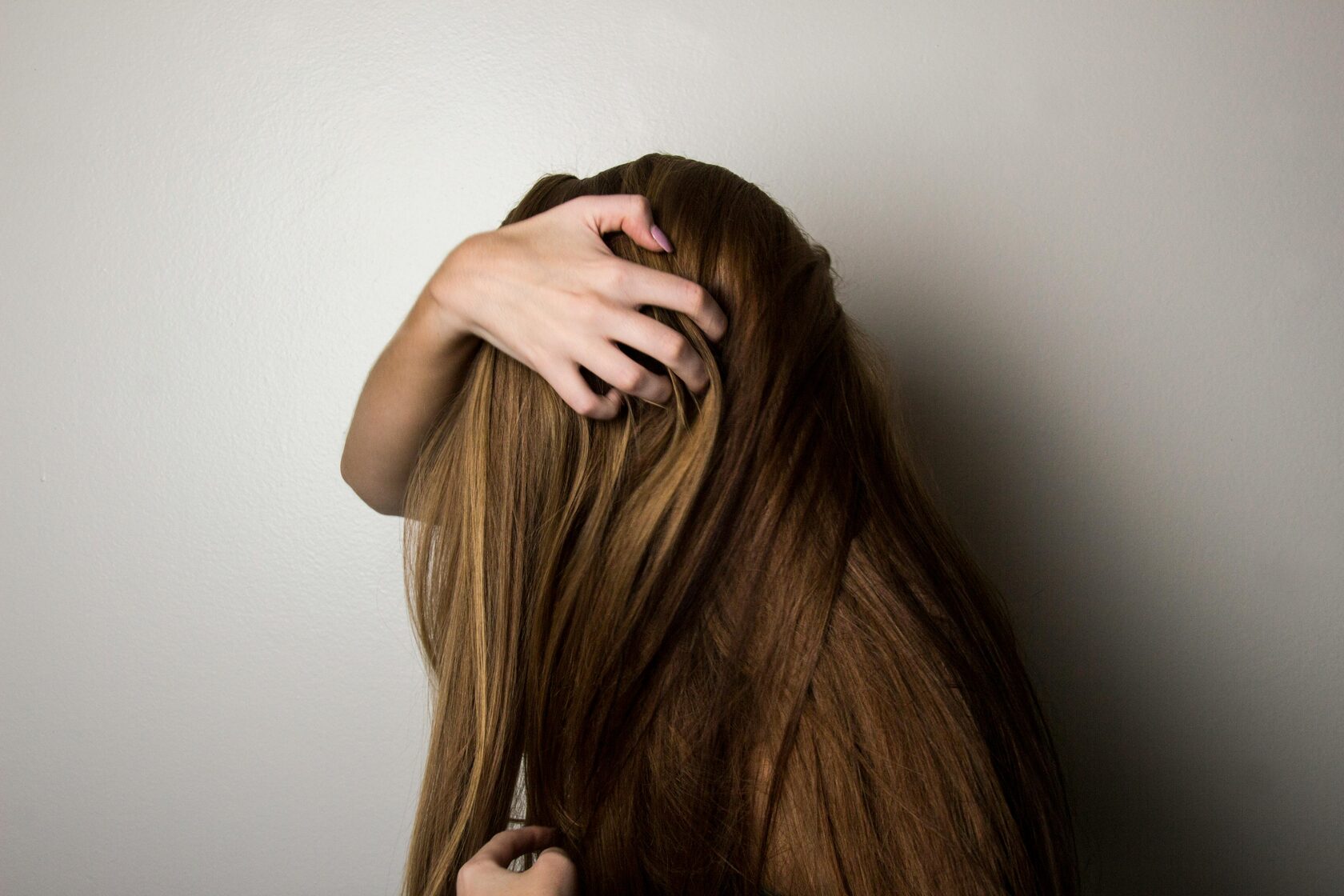Let’s talk about one of the most popular ways to spice up your erotic life – Hair Pulling. Simple yet intense, intimate, and absolutely hot kink stands at the frontline among the BDSM community.

We’re here to help you explore the art of hair pulling: what’s behind this kink that makes it so alluring, how to perform it right, and most importantly, how to enjoy it safely.
What is hair pulling?
You might picture it as grabbing a chunk of someone’s hair until it hurts and waiting for gasps or pleas for mercy. Roughly – it might be, yes. But trust us, there is so much more to it than that.
Hair pulling, if done right, is an art. It’s a deliberate, consensual form of stimulation where one partner grips another’s hair to sharpen the sensations, giving the whole process a more passionate undertone.
The grip can vary from light teasing and playing with hair to a firm, commanding pull. You can see that there is a strong emotional and psychological aspect to it – that’s because hair pulling is usually centered around dominance and submission. Which can be a great way to explore trust, vulnerability, and connection.
Hair pulling, if done right, is an art. It’s a deliberate, consensual form of stimulation where one partner grips another’s hair to sharpen the sensations, giving the whole process a more passionate undertone.
The grip can vary from light teasing and playing with hair to a firm, commanding pull. You can see that there is a strong emotional and psychological aspect to it – that’s because hair pulling is usually centered around dominance and submission. Which can be a great way to explore trust, vulnerability, and connection.
What’s so special about hair pulling?

Sensory and physical thrills
Some people find it especially attractive when their partner grabs them by the hair and kisses forcefully like they’ve been starving for them their whole life. The physical sensation of hair pulling activates nerve endings on the scalp, creating a mix of sharp and pleasurable sensations. In the right erotic set it can send shivers down your spine – you will feel emotionally and physically aroused.
Psychological and emotional aspects
If we’re getting all science-y, hair pulling can actually trigger endorphins – aka the brain’s happy chemicals. The mix of trust, tension, and passion leaves you feeling bonded, wanted, and just happy to have your person.
It also taps into the thrill of control and submission. The one pulling can feel absolute power, while the other fully surrenders, trusting and enjoying the moment.
Role play and fantasies
Hair pulling often features in role-play scenarios. It’s kinda essential in BDSM scenes because it hits all the right notes: dominance, submission, and straight-up desire. But even without diving into full-on role play, simple hair pull can intensify your feelings adding that little bit of spice to your sex life.
Getting started

Hair pulling is only enjoyable when practiced safely and consensually. So here are a few points to keep in mind before diving in:
Have a little chat about it
So, you are all hyped up and can’t wait to grab some hair (or have yours grabbed). But does your partner feel the same? Having an open, honest conversation beforehand is key to making sure you're both on the same page. Express your desire, talk about what you’re into, what you’re not, and fantasize about the way you want to experience it. Getting clear on what feels good and where those boundaries lie is super important.
Don’t forget that not everyone’s into stuff like this, and that’s absolutely normal. Just like with any other kink, it can bring up negative associations or simply be just a no. Always respect your partner's preferences.
Consent and communication are everything!
Practice makes perfect
If you want to have the best possible experience, then practising hair pulling can be quite a good idea. For example, you can guide your partner on how you like it, or you both can experiment to find what feels best. Our little tip here would be to focus on the roots, closer to the scalp, instead of ripping hair from the ends. The goal is to stimulate nerves, not leave our partner bald, right?
And, just to be safe, you can come up with a stop word.
Combine with other activities
Add extra thrill to your dynamic by combining hair pulling with verbal commands, kissing and light bondage. This way your sex promises to be even more exciting. You can find guides about those kinks HERE. (link)
Start slow
No rush – take your time and enjoy every step of the process. Make sure you’re both in the right mood, aroused and ready for the action. It can start with a gentle pull, slowly building up the intensity as the vibe picks up. When you both feel confident and comfortable – just let the energy flow in.
Check in regularly
Pause during play to check in with your partner. Asking a few simple questions about how they feel and whether everything’s alright is more than enough. There’s zero reason to push through discomfort or pain because at the end of the day, it’s all about pleasure, right?
Provide aftercare
Emotional aftercare, like cuddling or talking, helps both partners process the experience better. Whether it’s after exploring a new kink or just after sex, aftercare creates a space to relax, decompress emotions, and strengthen your bond.
Advanced techniques or variations

Once you’re familiar with the basics of hair pulling you might want to try something even more exciting. Here are 3 ways to spice up your hair pulling game.
Directional pulls
Experiment with pulling hair in different directions to create varying sensations. For example, pulling the head back exposes the neck, adding an element of vulnerability with knife play.
Combine with sensory play
Our body has millions of nerve endings and hitting the right ones gives us various incredible sensations. Turn up the intensity of the moment by combining hair pulling with sensory deprivation by using blindfolds, biting, or whispered commands.
Role-play scenarios
Hair pulling is a key element for those who enjoy role-play. Typical scenarios include a heated lovers’ quarrel, dominant/submissive dynamic, rough romance, seduction and teasing. Put yourself in different positions, switch up roles and enjoy the thrill of experimenting.
Conclusion
Hair pulling is a versatile and exciting kink that can spice up your erotic life. It involves sensory stimulations, physical contact, desire and trust. With the right partner and attitude, it can become a beautiful tool in reaching the peak of pleasure in bed. Start slow, enjoy every moment and let your feelings lead the way. Passionate and rough, or romantic and gentle – only you choose the way to enjoy hair pulling.
Flure isn’t just a dating app—it’s your gateway to meaningful connections and unforgettable experiences. Whether you’re seeking new friendships, someone special, or just exploring, Flure makes it easy to find your kind of people. Built on trust, safety, and authenticity, Flure turns your online dating into something truly magical. Ready to make connections that matter? Join Flure today and see where it takes you!
FAQ
What is hair pulling in BDSM?
Hair pulling is a consensual act where one partner grips or tugs another’s hair to evoke pleasure, often used in dominance and submission dynamics.
Is hair pulling safe?
Yes, when done correctly with proper technique and communication, hair pulling can be a safe and enjoyable kink.
How do I grip hair properly?
Always grip close to the scalp to avoid unnecessary strain or damage to the hair strands and roots.
Can I combine hair pulling with other kinks?
Absolutely! Hair pulling pairs well with sensory play, role-play, or other BDSM elements to enhance the experience.
How do I care for hair after pulling?
Use conditioning treatments or leave-in products to nourish the hair and scalp and provide a soothing massage to relax any tension.








